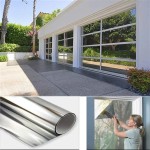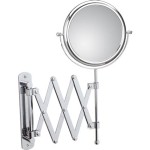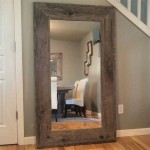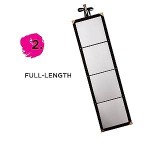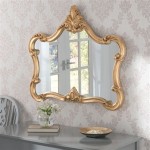Two-Way Mirror Meaning
Two-way mirrors, also known as one-way mirrors or observation mirrors, are fascinating optical devices that allow selective viewing based on lighting conditions. They function by carefully balancing the light transmission and reflection properties of a specially coated piece of glass. Understanding the principles behind their operation reveals the intriguing physics at play.
Light Transmission and Reflection
A standard mirror reflects nearly all incident light. Two-way mirrors, however, are constructed with a thin metallic coating, often a layer of aluminum or silver, applied to one side of a glass pane. This coating is semi-transparent, meaning it both reflects and transmits light. The critical factor is the proportion of light that is reflected versus transmitted. Typically, a two-way mirror reflects around 50% of the incident light and transmits the remaining 50%.
The Importance of Differential Lighting
The "two-way" effect is achieved by manipulating the lighting levels on either side of the mirror. The side intended for observation (the surveillance side) must be significantly darker than the mirrored side (the subject side). When light from the brighter subject side strikes the mirror, a portion is reflected back into the subject room, creating a mirror-like appearance. Simultaneously, a portion of the light is transmitted through the mirror to the darker observation side. Because the observation side is dark, this transmitted light is relatively noticeable, allowing observers to see through the mirror.
The Role of Perception
On the brighter subject side, the reflection of their own surroundings and the small amount of light transmitted from the dark observation side combine. The reflected light is far more intense than the transmitted light, leading to the perception of a normal mirror. The brain prioritizes the stronger reflected light, effectively masking the dimmer transmitted light from the observer's side.
Applications of Two-Way Mirrors
Two-way mirrors find applications in various settings, often where discreet observation is required.
Security and Surveillance
Law enforcement and security agencies utilize two-way mirrors in interrogation rooms and for surveillance purposes. This allows observation of subjects without their knowledge, providing valuable information during investigations or monitoring situations.
Research and Studies
In psychology and behavioral science research, two-way mirrors facilitate observation of subjects in controlled environments. Researchers can observe natural behaviors without the potential influence of direct observation.
Entertainment and Illusions
Two-way mirrors are employed in stage magic and entertainment to create illusions, such as appearances and disappearances. They are also used in architectural design to create unique visual effects.
Teleprompters
Teleprompters utilize two-way mirrors to project text onto the glass while allowing the speaker to look directly through the mirror at the camera. This allows speakers to read a script while maintaining eye contact with the audience.
Detecting a Two-Way Mirror
While two-way mirrors can be effectively concealed, there are methods to detect their presence. One simple technique involves placing a fingernail against the reflective surface. If there is a gap between your fingernail and its reflection, the surface is likely a standard mirror. If your fingernail appears to touch its reflection directly, it may be a two-way mirror. This is because a standard mirror has a protective layer of glass over the reflective surface creating a small gap, whereas a two-way mirror often has the reflective coating on the front surface.
Another method involves observing the lighting conditions. If the room on the other side of the mirror appears unusually dark, it might be an observation area. Turning off the lights on your side and shining a bright flashlight against the mirror can also help reveal any hidden observation areas.
The functionality of a two-way mirror relies on the manipulation of light and the resulting perceptual differences. Understanding these principles clarifies how this seemingly simple piece of glass can serve a variety of purposes, from security and surveillance to entertainment and scientific research.

How A Two Way Mirror Works

What Is A Two Way Mirror Glass Com Dictionary
How To Tell If A Mirror Is Two Way Or Not Quora

How To Detect A Two Way Mirror Fingernail Test

How To Tell If A Mirror Is Two Way Or Not Quora

No Space Leave This Place Finger Test Won T Always Tell The Difference Between Real And Two Way Mirrors Check

How To Tell If Your Mirror Is Two Way Glass And Someone Watching You Metro News

Acrylic Two Way Mirror Buy Precision Cut 2 Mirrors
How To Tell If A Mirror Is Two Way Or Not Quora
How To Tell If A Mirror Is Two Way Or Not Quora


